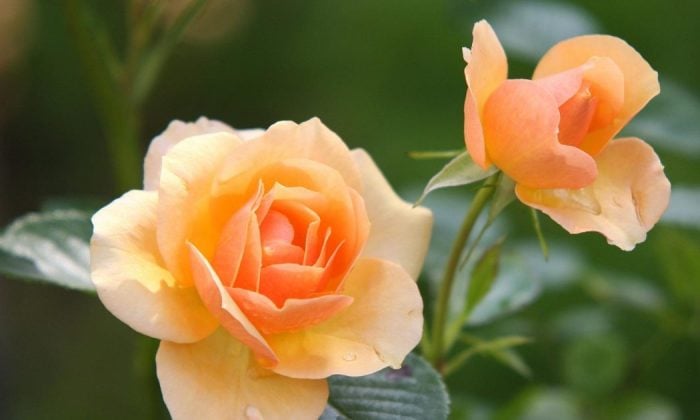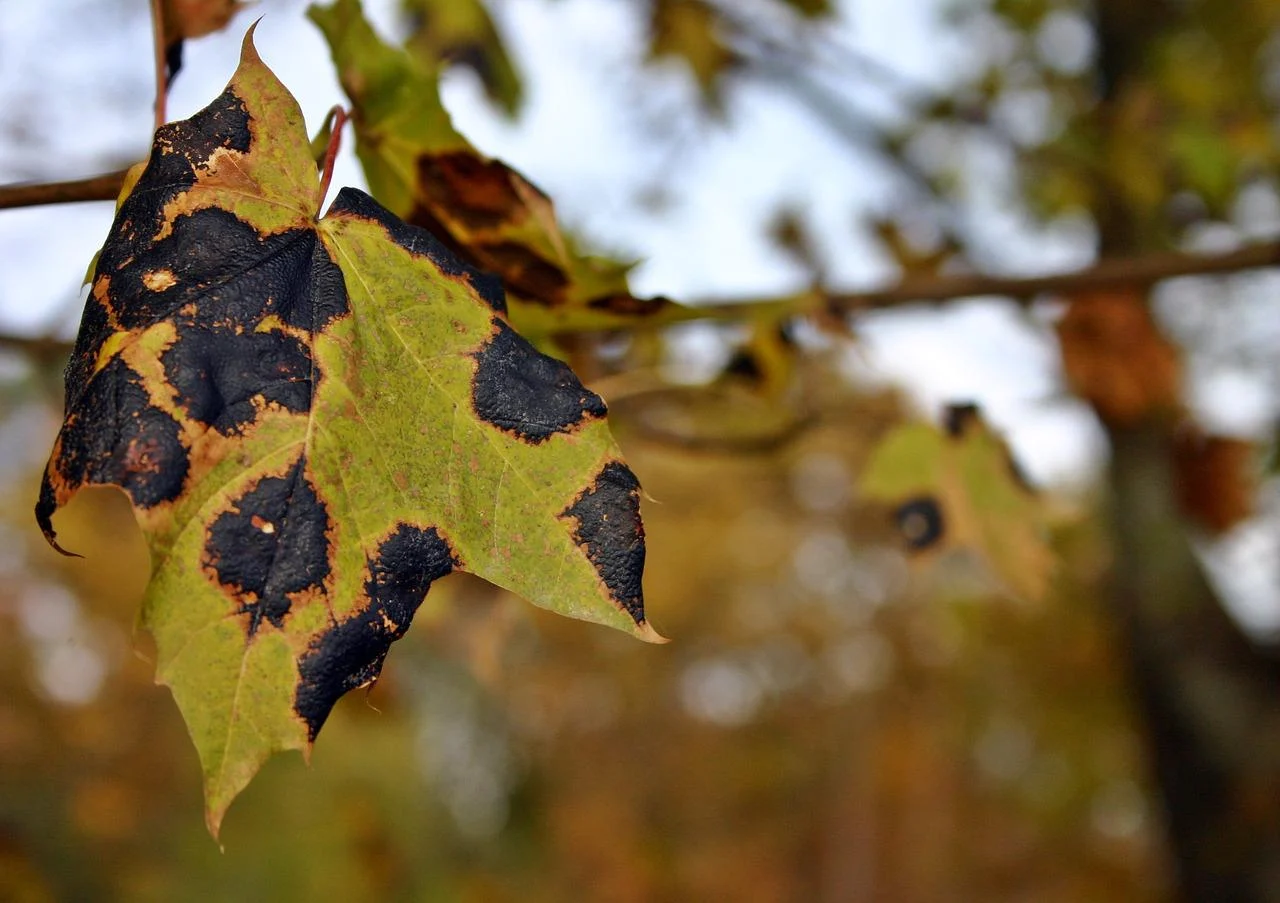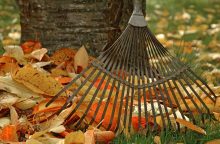How to care for roses and prevent black spots

Black spot on roses is a fungal disease that often attacks roses. You can easily recognize it by black spots that appear on leaves. This is a serious problem and if you do not intervene immediately, leaves will turn yellow, dry up and fall off eventually. This fungus is not only ugly it seriously weakens roses and they may die eventually.
Black spot fungus thrives in damp and cool weather, while summer heat slows down the spread a bit.
Dangerous black spot fungus
Diplocarpon rosae creates strange and somewhat circular black spots on leaves. The good news is that you will notice it quickly. Black spots start developing on the upper side of leaves and later appear on the underside. Edges are ragged and surrounded by a yellow ring.
Spots usually appear on lower leaves first and then move upwards. But that is not always true. They may start on upper leaves and even on young leaves that have just developed. The ugly spots grow in size and even emerge together over time. Affected leaves dry out and die. If you fail to take an action the plant will lose all leaves.
The fungus spreads to young stems, where it creates dark purple or black blisters. This negatively affects flowers too. Infected plants are unable to produce new buds. Existing buds will not bloom and die. Affected plants get very weak and are therefore an easy target for various pests.
Photo: Pixabay
Can you protect your roses?
Although there is no effective cure for leaves that have already been infested, you can prevent this terrible disease to a certain point. Spores, which can survive the winter are the main culprit. Spores remain dormant in leaves and stems and patiently wait for suitable conditions to grow and multiply.
Spores germinate in spring and spread around when you water plants. Spores must be wet for at least 7 hours to become vital and able to spread around. Later they develop into dangerous fruiting bodies which produce more spores, which affect new tissues, and therefore effectively spread the disease.
Keep plants healthy
To prevent diseases that can easily destroy roses you need to maintain healthy plants. Strong plants are less susceptible to various diseases and pests. Roses like sunny places and well-drained soil. They also need regular watering. Plant roses in locations where the sun shines early in the morning. This will help you to dry moisture on the leaves. Best if your roses are exposed to sunlight all day long.
Sufficient air flow
Make sure to provide sufficient air circulation around and between plants. That means you need to keep enough space between individual plants! Do not plant too close. If rose plants are too dense they will not get enough air circulation. If that is the case, you need to trim and prune to create a sufficient space between plants. Sufficient space will also help plants to grow straight and apart enough to prevent diseases from spreading.
Proper watering
Do not pour water on leaves if you can. Rain is good of course and will make leaves wet, but nevertheless, it creates the right conditions for the fungus. If you use a sprinkler system try aiming at roots.
Trimming and cutting
If you notice black spots, you really need to remove all infected leaves and create enough room before each winter. If you prune during the dormant season or at the turn of winter and spring, dispose of all remaining leaves. Spores like to stick to leaves and stems and will attack again if the right conditions arise.
About 10 days after infection, the disease starts developing quickly. Water is all the fungus needs to spread. Again you need to remove all infected shoots. Make sure that the distance between infected and healthy spots is at least 8 centimetres. Cut shoots only if the weather is dry.
Follow hygiene cutting rules. Disinfect scissors with alcohol solution after each use. Burn infected stems and leaves! Never put them in a composter. Collect fallen leaves and burn them!
Mulching?
Maintain a layer of bark mulch around plants. Mulch prevents soil droplets from splashing onto other plants during watering or rain. If spores live in soil, mulch will prevent them from spreading. Make sure the mulch does not contain pieces of rotting wood. As mentioned earlier, this insidious fungus thrives in moist and rotting environment.
Chemicals
There are several commercial as well as DIY solutions that can help you to prevent the spread of black spot fungus. However, the treatment is a time-consuming task and may not even work that well and black spots may come back. If you choose chemicals, you will be spraying every day from the beginning of spring.
Baking soda
Mix one teaspoon of baking soda in one litre of warm water. Add one teaspoon of liquid soap and mix well. Spray eaves thoroughly on all sides. This approach usually works as preventive measure only because it helps protect plants against mould.
Bordeaux blend
It is a fungicide that contains copper sulphate and hydrated lime. You may use it as a powder or mix it with water to create an effective solution. The so-called Bordeaux mixture can repel some pests, but it can also burn leaves if you use a very strong solution. It is usually applied as a preventative measure during spring before plants develop leaves.
Insecticidal soap and fungicide
You can use an organic fungicide, which is mainly sulphur mixed with regular insecticidal soap. The sticky soap creates a coat around leaves helping the fungicide to adhere.
Neem oil
It is an organic fungicide and pesticide obtained from special trees. Be careful when applying because it can burn leaves on hot days. Repeat but wait at least two weeks before applying again.
Sulphur
Sulphur prevents fungi from multiplying and spreading and it is therefore used to control and slow down spread of diseases. Sulphur usually comes in fine powder. If you want to use a spray bottle check the packaging and make sure that it may be mixed with water.
Which varieties are resistant?
Roses are marked and divided according to resistance. You may choose from less to highly resistant varieties. So, if your garden is where black spots and other diseases occur regularly, buy a plant that is highly resistant to these diseases. Rugosas rose variety shows a good resistance as well as some new bush varieties. However, even if roses are labelled as resistant, it does not mean that they will not get infested. Always create suitable conditions for growth!
Source: thespruce.com, novinky.cz
Preview photo: Pixabay

Gardening is my hobby, I have a lot of experience and I am happy to share it.









0 comments